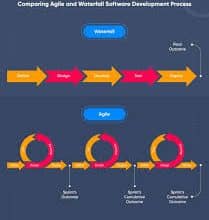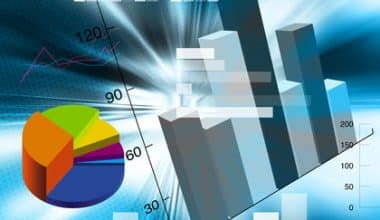Making the appropriate judgments is tough in business, especially when there are insufficient pieces of data to assist decision-making. Analyzing history isn’t always a trustworthy predictor of what will happen in the future. Hence, making decisions just on the basis of historical facts is often incorrect. Predictive and prescriptive analytics are two forward-thinking technologies that company leaders utilize to get beyond these restrictions. They more correctly forecast the future and, in the case of prescriptive analytics, direct executives to the best overall decisions by combining historical data (descriptive analytics), rules, and a knowledge of the business. But then you should first know the difference between the two (predictive vs prescriptive analytics) before taking a step in this direction—considering that they both sound alike.
Overview (Predictive vs Prescriptive Analytics)
The growing importance of these analytical techniques is reflected in a forecast that the global market for predictive and prescriptive analytics would expand at a CAGR of 19.6% to $28.7 billion by 2026.
So the big question is, are there any distinctions between predictive and prescriptive analytics, or are they interchangeable?
Well on the contrary, despite the fact that both strategies are forward-thinking, may sound alike, there is a significant difference between them. According to Gartner’s Analytic Ascendency Model, the following is the hierarchy of analytical techniques:
- What happened? (Descriptive Analytics)
- Why did it happen? (Diagnostic Analytics)
- What will happen? (Predictive Analytics)
- How can we make predictive analytics a reality? (Prescriptive Analytics)
So, while predictive analytics foretells what might happen, prescriptive analytics reveals how to make it happen. Predictive analytics is subservient to prescriptive analytics in this scenario. This isn’t to say that predictive analytics isn’t useful; it’s just that the information they provide isn’t the same.
Predictive Analytics
The use of statistical and modeling approaches to predict what will happen in the future is known as predictive analytics. It calculates the likelihood of a given event or events using historical data and modeling approaches. Predictive maintenance is a fantastic example of predictive analytics since it tries to figure out when a machine needs service by using various algorithms and machine data to estimate the life cycle of important components. Although this data is informative and actionable, it does not define the specific action that should follow. Rather, it tells the user that maintenance is required.
Prescriptive Analytics
Prescriptive analytics varies from predictive analytics in that it not only predicts what will happen but also gives the user with specific options and prescribes which business solutions are the best based on specified criteria. This type of analytics helps a business or organization build a model. And to ensure that it accurately represents all aspects of the business, this model is evaluated against current and historical data.
Furthermore, users can examine the model to determine the best decision based on established criteria such as profitability, SLAs, and throughput, rather than merely forecasting what will happen.
Prescriptive analytics, in the context of the predictive maintenance example above, not only decides that maintenance is imminent, but also determines the best options for maintenance, replacement, or outsourcing in order to maximize total profitability and turnover.
Predictive vs Prescriptive Analytics: What’s the Difference?
Both predictive and prescriptive analytics are crucial business tools, and each serves a different purpose. But then, predictive analytics is inferior to prescriptive analytics, according to Gartner’s analytics hierarchy. This is because predictive analytics predicts what will happen but does not provide direction on how to make the necessary decisions. Prescriptive analytics, on the other hand, not only predicts what will happen but also identifies the most optimum business decision.
Attributes of Predictive Analytics
- Helps to model certain elements of a business.
- Predicts what is likely to happen in the future.
- It predicts a time frame (when it will happen).
- The outputs are not actionable; they only indicate that a decision is required.
- It has a tendency to prioritize one function over others.
- Typically, hypotheses are tested using predetermined scenarios with limited options.
Attributes of Prescriptive Analytics
- Helps to model the entire company
- Solely dependent on data
- Assists in recommending specific business decisions.
- Takes into account interdependencies
- Isn’t constrained by rigid regulations
- Benefits are observable and quantifiable.
- Incorporates what-if scenarios.
- Literally free of “gut instinct” and personal prejudice
- Takes into account all inputs, variables, and outcomes.
- Implements calibrated and validated models to accurately reflect how the company operates.
Is Analyzing Predictive vs Prescriptive Analytics Important?
Yes, the distinction between predictive and prescriptive analytics is significant.
Some often wonder whether the distinction between these two analytics is really significant in practice. This results from how more economical it is to operate predictive analytics against prescriptive analytics. In other words, they try to point out that optimizing a prescriptive analytics solution requires far more effort than optimizing a smaller-scale predictive analytics solution. It’s critical to evaluate the business maturity of potential clients when answering that question.
While the majority of companies employ business intelligence, not all of them have advanced to predictive analytics. Plus, the records show that prescriptive analytics is currently used by only 11% of medium to big enterprises. The prescriptive analytics software market, on the other hand, is expected to grow at a 20.6 percent CAGR by 2023. This indicates that approximately 37% of businesses will begin to use prescriptive analytics.
These findings show that the distinction between predictive and prescriptive analytics is becoming increasingly important for a rising number of businesses.
In any case, the two analytical methodologies serve completely different purposes. Predictive analytics is reactive in the sense that it emphasizes the necessity for management to respond. Prescriptive analytics, on the other hand, are proactive in that they show management the path forward.
But here is something they have in common. Both predictive and prescriptive analytics use real-time data obtained from a company or business, as well as other information.
Predictive Analytics vs Prescriptive Analytics: What Problems Would You Solve?
Predictive and prescriptive analytics are not stand-alone solutions that can be employed on their own. All types of business analytics have a place in organizations to solve various problems.
Predictive analytics is often a tool to identify short- to medium-term trends, which often come in handy— though in isolation from larger trends. Here are a few examples:
- Risk analysis for short-term insurance
- Sales trends especially for individual lines and goods.
- Demand forecasting
- Inventory management
- Customer churn
- Profitability
- Maintenance requirements
On the flipside, prescriptive analytics takes a broad view of the situation. Prescriptive models often analyze entire organizations, or at the very least discrete functions, divisions, or factories, whereas predictive analytics may measure specific patterns. Prescriptive analytics solve the following problems:
- Optimizing coal extraction across multiple mines to meet customer demands while increasing overall profitability.
- Determining the best manufacturing and inventory strategy especially for consumer goods firms.
- Choosing the optimal operation approach for a wastewater treatment utility that serves a vast metropolitan region while staying in compliance with regulations.
The Difference in Organizational Value that Both Techniques Provide
Despite the fact that both methodologies have actual benefits, prescriptive analytics usually outperforms predictive analytics. While the scale of operations plays a role, the kinds of decisions taken and the capabilities of prescriptive analytics to optimize decisions also play a role.
For short-term risk assessments, predictive analytics tends to focus on a relatively restricted collection of criteria, such as the example above. While this form of research can yield significant benefits by reducing risk, it is unlikely to be on the same scale as a prescriptive analytics solution that mimics the insurance company’s operations. A model like this can discover the most profitable insurance products, the finest markets, and the best methods for long-term business success. Additionally, instead of being limited to specified scenarios, corporate executives may use prescriptive analytics to examine a variety of what-ifs, possibilities, and trade-offs.
Prescriptive analytics may be more expensive than predictive analytics, the ROI, however, has the potential to be far greater.
The Distinction Between Technology Needs
Data analysis has traditionally been the domain of data scientists; but, today’s fast-paced business environment necessitates that line managers and executives have immediate access to these analytical tools. While this does not indicate the involvement in programming or data refinement, it does entail that they should have access to end-user tools and dashboards that allow them to investigate outcomes independently. This hands-on approach instills trust in the technologies while also providing real-time data to aid decision-making.
You could basically carry out tons of prescriptive analytics tasks with a variety of technologies, ranging from high-level programming languages to built-in ERP tools and solution-specific software packages. To make the data usable, the first step is to clean it up and integrate it. Following that, numerous analytical approaches that come on board include:
- Regression techniques; includes Linear, time-based, and logistic regression methods
- Machine Learning Methods
- Neural networks
- Conditional probability (Nave Bayes)
Prescriptive analytics takes this a step further by incorporating heuristics or optimization into the analysis.
Heuristics
Heuristics come in handy when dealing with operational scenarios beyond description. This method is a mathematical approach based on rules. It’s useful in instances when similar decisions are made on a regular basis, such as acquiring raw materials. Basically, heuristics are useful for automating judgments but not so much for optimizing them. However, some basic flaws include the absence of requirements for regular rule amendment to avoid rules becoming out of date, as well as the fact that heuristics can’t examine every possible circumstance.
The ideal solution is determined using a combination of mathematical models and accurate algorithms. To answer specific queries, a mathematical model reflecting the business or function is created, and a precise algorithm is employed. An optimization model’s goal is to maximize or decrease a parameter like profit or costs.
Optimization
Packaged solutions and optimization platforms are also available for prescriptive analytics software. Packages are easier to configure and are frequently created to tackle a common problem or for a specific industry. They’re commonly available as SaaS or PaaS solutions in the cloud.
An optimization platform, however, consists of two parts: a modeling platform for defining the problem and an optimization solver.
Models are created using a drag-and-drop visual interface or by using math. Furthermore, the majority of optimization systems are run in-house, and the expenses vary considerably. They provide highly personalized solutions that are realistic representations of the issue. In addition, they may necessitate the use of skilled programmers to build the model, and they frequently lack end-user interfaces.
Some, like River Logic’s Microsoft Azure platform, demand extensive programming abilities, while others, like River Logic’s Microsoft Azure platform, don’t.
What are Predictive and Prescriptive Analytics?
Predictive and prescriptive analytics are two forward-thinking technologies that company leaders utilize to get beyond restrictions of making decisions based on mere speculations. They more correctly forecast the future and, in the case of prescriptive analytics, direct executives to the best overall decisions by combining historical data (descriptive analytics), rules, and a knowledge of the business.
What Is the Difference Between Prescriptive and Predictive Maintenance?
Prescriptive analytics, unlike predictive analytics, not only decides that maintenance is needed, but also determines the best options for maintenance, replacement, or outsourcing in order to maximize total profitability and turnover.
Which Is an Example of Prescriptive Analytics?
Maps and traffic apps are common examples of prescriptive analytics in action. Google Maps will examine all available forms of transportation (e.g. bus, walking, or driving), current traffic conditions, and probable roadworks when calculating the optimal route to get you from point A to point B.
What Type of Data Analytics Has the Most Value?
While predictive analytics foretells what might happen, prescriptive analytics reveals how to make it happen. Predictive analytics is subservient to prescriptive analytics in this scenario. This isn’t to say that predictive analytics isn’t useful; it’s just that the information they provide isn’t the same.
How Are Predictive and Prescriptive Analytics Similar?
Both provide knowledge and even foresight to help businesses make decisions. Both predictive and prescriptive analytics use statistical modeling, machine learning, and data mining to provide strategic tools and deep insight into customers and overall operations to MBA executives and MBA graduate students.






